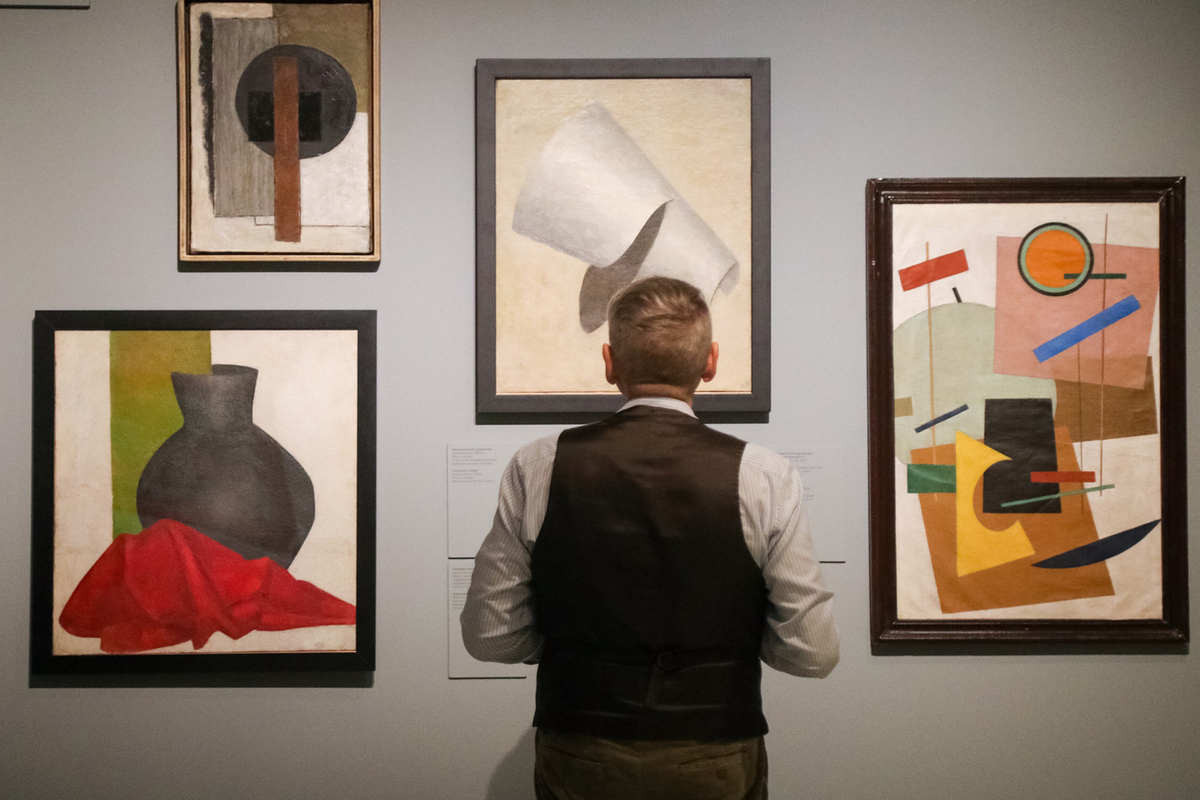The Museum of Russian Impressionism showed masterpieces by unknown artists
[ad_1]

Collection of Great Anonymous
“Author unknown. Touch the main thing” is the name of the exhibition at the Museum of Russian Impressionism, which contains works that more often gather dust in the collections than show off on display. And all because the authorship of most of the works presented is unknown. However, there are also paintings at the exhibition that for years were listed as “n/x”, but thanks to research, their creators have now been identified. And there are mystery masterpieces, the authorship of which is still in question, but there are suspicions that they were written by very famous masters. The MK correspondent plunged into games with unknown people.
Dozens of works are collected on two floors, the authorship of which has long remained in question or has not been clarified to this day. That is, we can evaluate these works without regard to the author’s “brand” from the point of view of pictorial skill and personal emotions. For objectivity, it is proposed to consider them not only according to the principle of “touches or not,” but with the help of such categories of art as color, light, form, composition, texture, movement, etc. At the same time, you can study, for example, the Thierry method – the phenomenon of inversion of perception, which was used by the Cubists. In practice, we look at a two-dimensional image, but we see it in volume: the figure seems to be turned inside out, part of it seems hollow, the other convex. Or we can compare the color systems that were proposed by different researchers in different eras – from Isaac Newton to Mikhail Matyushin. Moreover, each section is interactive: you can play with colors by rearranging figures on a magnetic field, with shape – by building your own structures from wooden blocks, with texture – by sticking your hand into a black box, where you will find something soft or embossed. In this way, you can not only better understand the exhibits on display, but also understand how art changed at the turn of the late 19th and early 20th centuries, and it is precisely this period that the exhibition covers.
But the most interesting thing, of course, is the fate of the works. Every unknown is a mystery. Why did it happen that the work was not signed? Sometimes this was done deliberately, sometimes history played a role, which first gave the “green light” to the avant-garde, and then attacked it with persecution for the so-called “formalism”; sometimes the name was lost due to the complex history of the canvas, its own complex fate. Take, for example, the painting “Girl in a Chair,” which is now attributed as the work of Robert Falk. Once upon a time she came to Yekaterinburg from Moscow and ended up in the collections of the local Museum of Fine Arts with the note “n/x”. It was clear that this was a work in the style of “Jack of Diamonds,” but who exactly wrote it? In 2006, art historians Dmitry Sarabyanov and Yuliy Didenko published archival photographs that left no doubt – this is Falk.
Another masterpiece of the avant-garde era was unraveled by Dmitry Sarabyanov’s son Andrey, who is now one of the most famous researchers of this trend. For a long time, composition No. 207 was listed without authorship. In 1928, she entered the Museum of the Tobolsk North from the closed Museum of Fine Arts and was held under the title “Still Life”. Suspicions that it was painted by Kandinsky were first expressed by Will Grosman, who was friends with the artist and in 1958 published a reproduction in his book. But doubts hovered around the canvas for a long time. Until an article by Andrei Sarabyanov was published in 2019, where an act on the list of paintings transferred to Tobolsk and details of the study were published. It turned out that the painting was painted during a difficult period for the artist – in 1916, when he was depressed. In 1920, it was purchased by the Museum Bureau for the Museum of Fine Arts, and the author personally influenced this decision. For which he later paid: when it was revealed that Kandinsky had purchased his own works for the museum, they decided to fire him from the All-Russian Purchasing Commission, of which he was the chairman. It ended with the artist leaving on his own, and in 1921 he emigrated to Germany altogether.
However, paintings, the authorship of which has not yet been clarified, can also tell a lot. Like, for example, a parody portrait of the symbolist poet Valery Bryusov from the collections of the Dahl Literary Museum. In the picture, the poet looks like a ruddy Parsley from a fair booth. The portrait once belonged to the lawyer, bibliophile and collector Sergei Kara-Murza (1878–1956), who knew the literary world of the 1920s well and described meetings with many writers in his memoirs. Bryusov is also in them. Obviously, the portrait was a joke of someone from the circle that gathered at the literary “Tuesdays” that the collector organized in his house on Sretenka. But we don’t know who exactly the author is. Bye. This is a mystery waiting to be revealed. Behind each work there are not only the author and the model, but also people who have been researching each work for years. That is, this exhibition is also about their research work, which often resembles a detective story.
But most importantly, this is the first project that proves that “n/x” is not a death sentence, which leaves interesting works in oblivion. Behind them lies the potential for exploration and new discoveries. And even if the discovery has not yet been made, the unknown can tell their own fascinating story.
[ad_2]
Source link






